My Appalachian Trail Gear changed due to my early start in February. Temperatures were colder than I expected and stayed colder longer than anticipated. Because of this, I carried more gear and layers in a larger pack. I also had gear that failed and did not work out well.
In this post, I’ll discuss what gear did and did not work. My gear and the weights are listed in the links below at Lighterpack, along with some short comments.
Table of Contents
Shelters on the AT
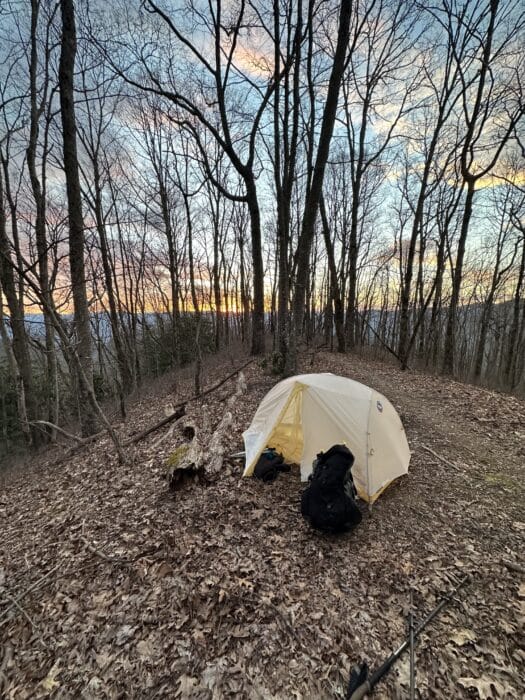
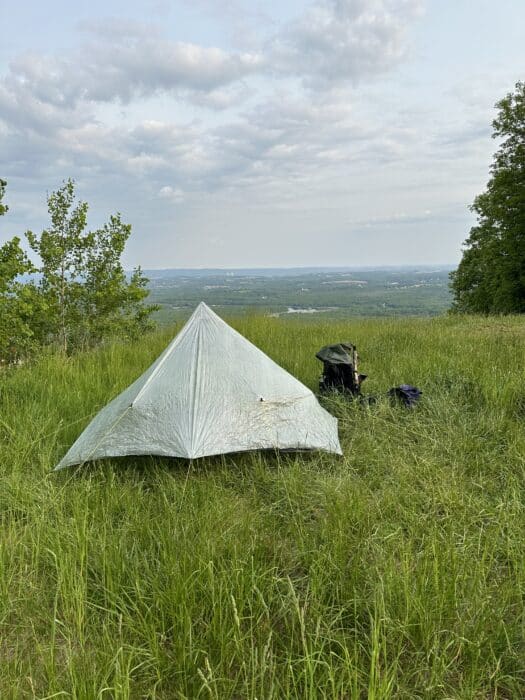
What Worked Well
The Big Agnes Tiger Wall UL1 is easy to set up, and I liked that I could squeeze its small footprint into small camp spots. It is also highly weather resistant. It held up in some bad storms and even a little snow. There were no leaks, and it shed high winds easily.
- I like the storage pockets a lot, especially the overhead bin and pockets.
- Extra guy lines are provided and attached for bad conditions, but I never had to use them.
- Condensation was never something I had to worry about.
I had my Zpacks Solo Plex Tarp Tent sent to me in Waynesboro, PA, and this was the shelter I used for the second half of the hike. This was a great roomy shelter, and I found it easy to set up on the northeast platforms.
- This shelter is much lighter than the tent at only 13.9 ounces.
- The Solo Plex is much easier to set up in the rain while keeping the inside dry. It also dries out much faster than the tent.
- The Solo Plex had much more interior room than the Tiger Wall and allowed more room for my gear.
What Did Not Work
Tent manufacturers seem to be racing to ultralight, and Big Agnes is no exception. My Big Agnes hub broke outside of Harper’s Ferry. They offered to send a replacement hub ten days ahead, but I still needed something in the interim. Since I did not trust the tent to survive the whole trail, I had a tarp tent sent to me and sent the Tiger Wall home.
- The fly is high. I sometimes get splash-back when it rains hard, even on good ground cover.
- The clips that attach the fly are open, so unless I am careful, they clog with dirt, making it hard to get out.
- The zippers are sticky and easily snagged on the tent material.
There was not much not to like about the Solo Plex, and it will probably be the shelter I use most often going forward.
- You have to be careful when you set it up and make sure you have a good pitch so the netting does not sag out from under the edges of the tarp. With practice, this becomes a very easy shelter to set up.
- There is an interior pocket, but not as many interior pockets as the Tiger Wall.
- Condensation is always an issue in single-wall tents, but I had less than I expected in the Plex Solo shelter, and it was manageable.
- The Plex Solo is much more durable than the Tiger Wall, and I don’t have to carry a ground sheet.
Would I Use it Again?
I would probably not use Tiger Wall on a long thru-hike, but I would on shorter hikes. It has a lot to like, but durability is an issue. The mesh had a couple of holes, the zippers were sticky, and I constantly had to mess with the less-than-elastic cords from the get-go. I would have had to replace the cord before I finished.
The Zpacks Plex Solo was the right choice. It was light, roomy, and durable. This is definitely a shelter I would use on a long trail where I needed peace of mind over thousands of miles.
The Backpack I used on the AT
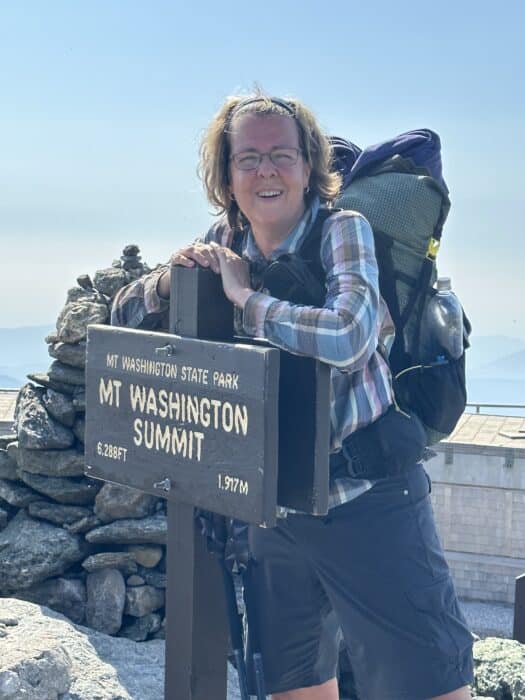
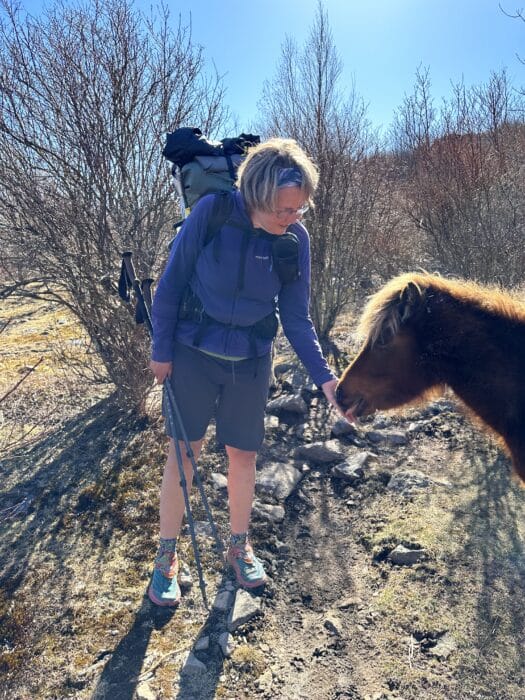
What Worked Well
The ULA Circuit is a versatile backpack that can expand for larger loads and compress for smaller carries. It is also a very comfortable backpack. I carried more gear than I anticipated, and this backpack handled it with no issues.
The Circuit has a large mesh outer pocket and two side pockets for water bottles, but most of the capacity is in the main compartment and a large sleeve that unfolds for large loads. It provides the carrying capacity I need for the AT and flexes when I need it for more or less weight.
What Did Not Work
Once the fabric gets wet, it does not dry quickly. This was not an issue because I use a compactor bag for my clothes and quilt, but I also keep my backpack in my tent/tarp tent, and a wet pack is irritating if your quilt or clothes are lying against it.
I purchased a backpack cover in North Carolina, which was helpful, but I will probably get a Circuit with their new water-resistant Ultra fabric in the future.
Would I Use it Again?
I will continue to use this backpack on three-season hikes. It is comfortable and versatile. The only change I will make is to purchase it in a more weather-resistant Ultra version.
Sleep System
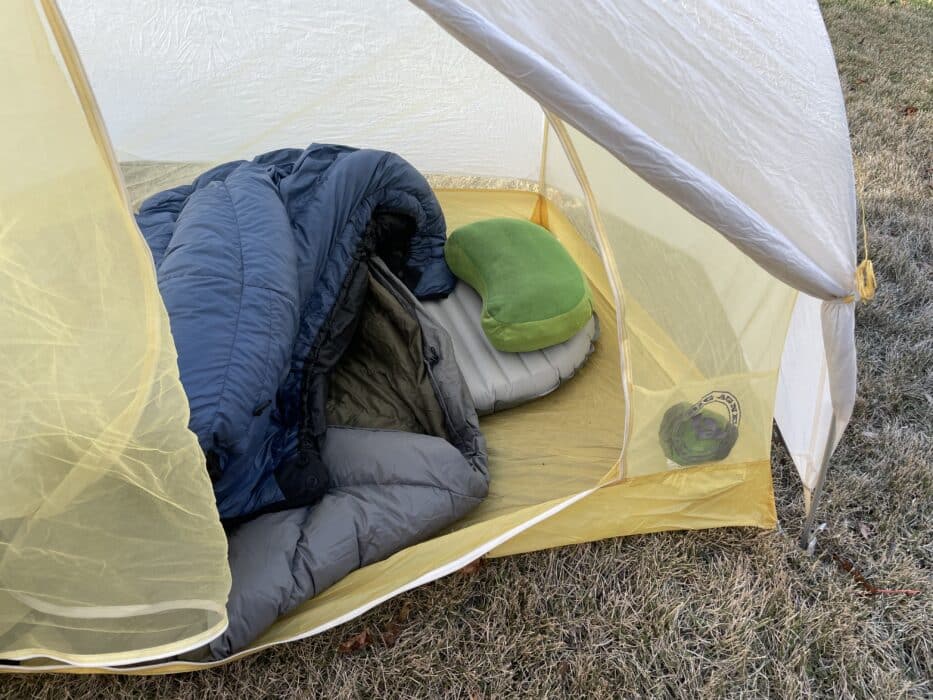
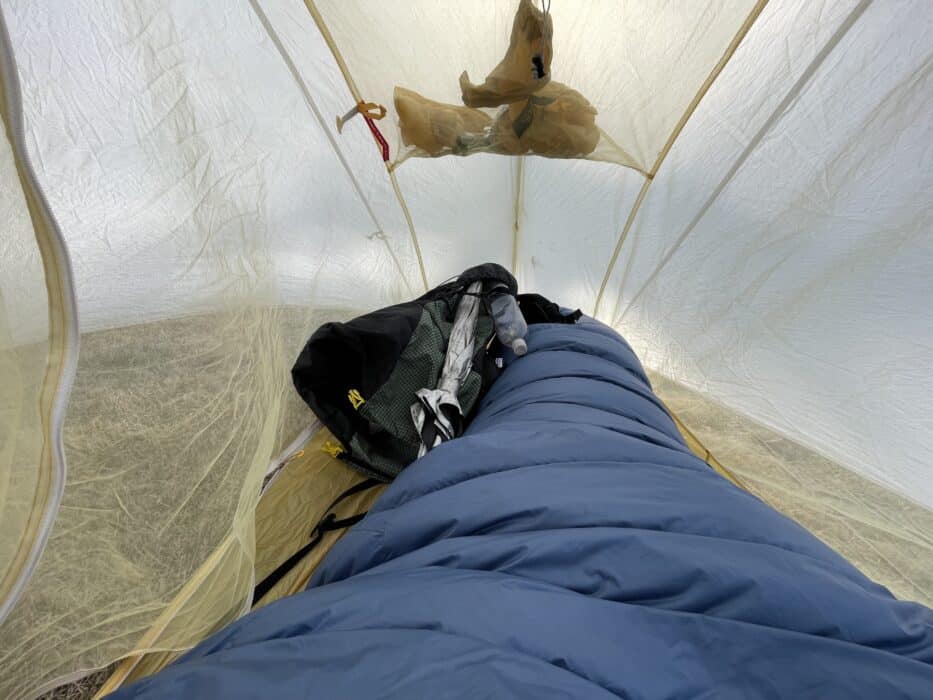
What Worked Well
My primary sleep system included a Neoair X-lite sleeping pad, Gossamer Gear 1/8 Thinlight pad, a Katabatic Sawatch 15 Degree quilt, my Sea-to-Summit Aeros Premium Pillow, and a Reactor Liner. This system did not change from prior hikes and worked fine until temperatures plummeted.
In NC and TN, temperatures dropped into the teens and single digits, so in Hot Springs, I added a Big Agnes Kings Canyon Summer Quilt, which I layered inside my Katabatic quilt. I estimated the quilt at about 50 degrees and combined with my Katabatic quilt, it provided enough warmth for the lower temperatures.
What Did Not Work
I had hoped my Katabatic 15-degree quilt would keep me a little warmer, but I began to get cold around twenty-five degrees. I would have survived at 15 degrees but eventually passed away from lack of sleep or loss of weight!
I lost about 20 pounds in just a few weeks as temps dipped on the trail, and my body fought to stay warm at night. I’m sure diving into my quilt at night with only a little dinner and only eating a few snacks all day did not help.
When I reached Erwin, TN, I was shocked at how much I had lost and immediately began packing more food and eating lunch.
Would I Use This System Again?
I have used this sleep system on several hikes now, and it worked out fine in the past, but I started the AT at the end of February. I should have taken my X-therm sleeping pad and zero-degree sleeping bag for the first six weeks, switched to my 15-degree quilt, and kept the X-therm for another month. I sleep really cold, and this would have been perfect for me.
The X-therm pad, 15-degree quilt, and Reactor liner may have worked for most nights, but I would have needed a wide quilt. As a matter of fact, I will probably only purchase wide quilts going forward. I toss and turn A LOT; no matter how much I cinch down the quilt, I always have to adjust for small gaps.
I’ll also note that I have used quilts from several manufacturers, and I still think Katabatic makes the quilt I like the most. It will be the quilt I continue to use, although I am a gear addict, and I’m sure I will try others.
Clothing and Layers for the Appalachian Trail
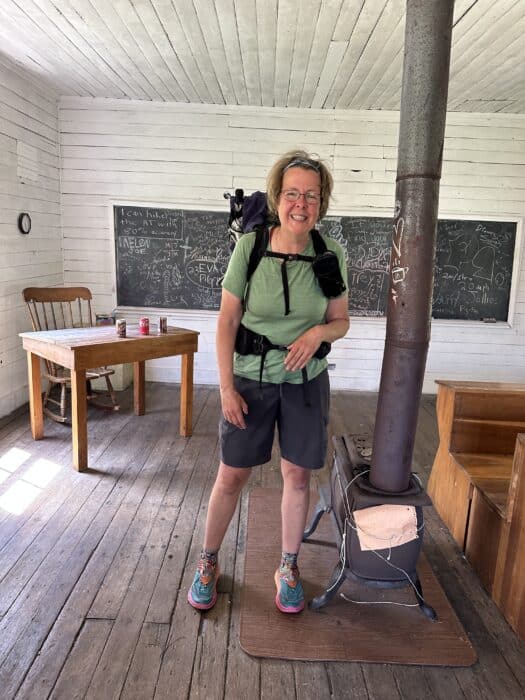

I expected it to be cold on the trail, but it was colder than I expected and for longer than expected. I ended up purchasing additional layers and gloves in Gatlinburg, TN.
- Base Layers – I wore a Woolx t-shirt as a base layer and wore an Icebreaker mid-weight shirt over this. In Gatlinburg, I purchased a mid-weight Patagonia layer from the clearance rack. I also wore a pair of Icebreaker tights under my Montbell rain pants when it was especially cold.
- Trailrunners/Trail Shoes – I started my hike with my pair of wide Oboz and switched to HOKA Speedgoats at the NOC. I love my Oboz, but over long mile days, they were too rigid for my feet and caused a few blisters. These went away with the trail runners.
- Ultra-light Montbell Full-zip Chameece Jacket – This is probably one of my favorite pieces of clothing. I like the full-zip for regulating heat and hiking in it over my base layers. I also use it in warm temps and send home my puffy. If I need more warmth in the summer at higher elevations, I put my rain jacket over it.
- Katabatic Tin Cup – This was a new Down jacket for me, and I loved it! It kept me warmer than my EOS and had plenty of Down in the Hood. When cold, I would layer it under my quilt and pull the hood over my face and head. This kept me much warmer than wearing the jacket, which compressed the Down.
- Montbell Versalite Rain Jacket – I wore this to block wind, protect my puffy, and add a little more warmth. It has full pit zips for regulating heat. I also tried a Mountain Hardware Ozonic later in the hike, but it did not perform well at all and wet out immediately in heavy rain. I also tried the REI Dri-Clime jacket, which was marginally better than the Ozonic, but neither was as good as the Versalite with an umbrella.
- Darn Tough Lightweight socks – I carried three pairs and used the thinnest running socks with no padding. This has always worked best for my feet. Oddly enough, I have never had an issue with my feet getting cold unless temperatures reach single digits.
- OR Fleece Hat – This is not a very attractive hat, but it is the warmest fleece hat I have worn. I also slept in it most nights. If it was frigid, I put my puffy hood over it.
- Melody Gloves from Outdoor Research – I use these in all three seasons. They are lightweight but keep my hands warm and are very comfortable. I also like the finger pads so I can use my phone if needed.
- Manzella Gore Insulated Gloves – I kept both pair until Damascus, VA when I sent the Manzellas home.
What Did and Did Not Work
My favorite layers were the Katabatic Puffy, Montbell Chameece, and new Woolx t-shirt. The Woolx t-shirt is the softest Merino wool t-shirt I have worn and would have lasted the whole trail easily if I had not switched to my fishing shirt for mosquitoes.
The biggest disappointments were the rain jackets. I should have just duct-taped the Versalite and kept it. The Mountain Hardware and REI jackets mentioned above did not perform well.
Appalachian Trail Electronics
My electronics are mostly covered in this article on electronics, but there were a few changes. I needed to charge my iPhone, headlamp, battery pack, Beats earplugs, and InReach. The article lists the plugs, except for an Apple fast charge plug I also carried.
- Iphone – I took an iPhone 14 on the hike. I had no issues with it and usually kept it on airplane mode or the low battery setting. I would top off the charge each night.
- Battery Pack (Anker 20,000) – I have used this on the last few hikes. It lasts me about seven days if I make sure everything is charged when I leave town.
- Headlamp (NU25) – I love this headlamp. I did not have to charge it often, about once a week if I used it regularly.
- InReach – I set the InReach to track every two hours. I did not send any messages. It only required charging every seven days or when I was in town. My family did watch it and squawked the handful of times I forgot to charge it.
- Beats Earplugs – These usually lasted a week since I would listen to a book at the end of the day an hour or so before camp.
Water on the Appalachian Trail
What Worked Well
The filter I have used for years is the Sawyer Squeeze with a CNOC bag. I have tried other water filters and always come back to Sawyer. You can check out my review of the Sawyer Squeeze Filter. The filter is light, fast, and easy to clean and use.
In addition to the CNOC bag and Sawyer filter, I carry two Smart Water bottles. The Sawyer screws onto them perfectly, and they fit in the side pockets of all my backpacks. They are also lightweight and easy to replace on long hikes.
What Did Not Work
The Smart Water bottles are skinny, so if you have wide side pockets, they may fall out if you scramble or take your backpack on and off. My ULA Circuit pockets can be cinched tight, so this was never an issue for me, but I found numerous bottles on the trail.
I also helped remedy this by carrying a little water in each bottle to hold them down. I tried to keep the same amount in both bottles to balance the pack better.
Food On the Appalachian Trail
What Worked Well
I cooked on the trail after Daleville, Virginia. I used a Vargo Titanium pot, and because it has a screw-on lid, I use it for cold soaking and cooking. My fuel canister and stove fit in the pot perfectly without rattling while I walked.
Food did not change much between cold soaking and cooking, besides the variety of dinner options. I always tried to eat a big breakfast coming out of town, so I typically just ate a couple of snacks and dinner.
- Breakfast – Some type of pastry, oatmeal, Breakfast Essentials, Chia seeds, Flax seeds, cereal
- Lunch – Deli Tuna Salad, Chicken Salad, Peanut Butter, Tortilla Wraps, flatbread, snacks, bars
- Snacks – Protein and Food Bars, trail mix, nuts, peanut butter, dried fruit, crackers
- Dinner – Freeze/Dehydrated Dried meals (I would often split these with Ramen since they are expensive), Ramen, Couscous, Tortilla wraps, peanut butter, Instant potatoes (not often)
What Did Not Work Well
The weather was exceptionally cold through NC and TN, sometimes down to single digits. This meant that at the end of the day, I only wanted to burrow into my quilt, and in the morning, it was too cold to sit still and eat. I snacked a lot, which was not enough since my body was also working hard to keep me warm. I lost about 20 pounds by Erwin, TN.
At this point, I began adding two packs of Breakfast Essentials to breakfast. This seemed to help curb the weight loss, and I was less hungry for a longer period of time in the morning.
Once the temperatures warmed up, I stopped for about 45 minutes for lunch and had 2 or 3 sandwiches or wraps each day. I also began cooking again in Daleville, VA, and enjoyed my meals much more which meant I ate them more consistently. By the end of Virginia, I had gained back about half the weight I had lost and maintained it for the rest of the hike.
Food Side Note
I was introduced to NUUN on the trail and have tried other electrolyte supplements. I have never needed electrolytes with the right combination of foods. Still, NUUN made me feel better at the end of a tough day, and it also made water with a lot of tannins taste better, so I ended up adding it to my water once a day when temperatures warmed up.
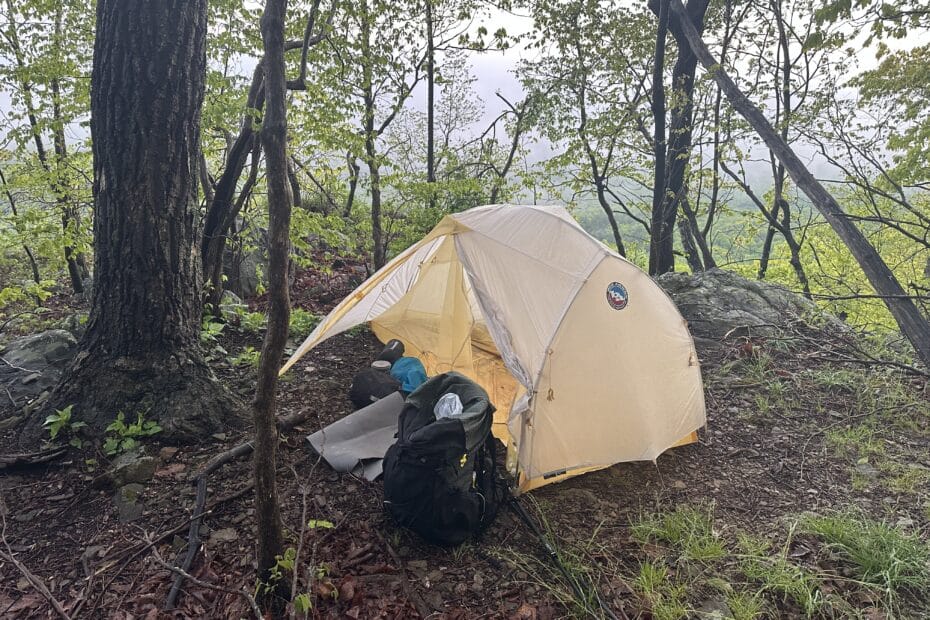
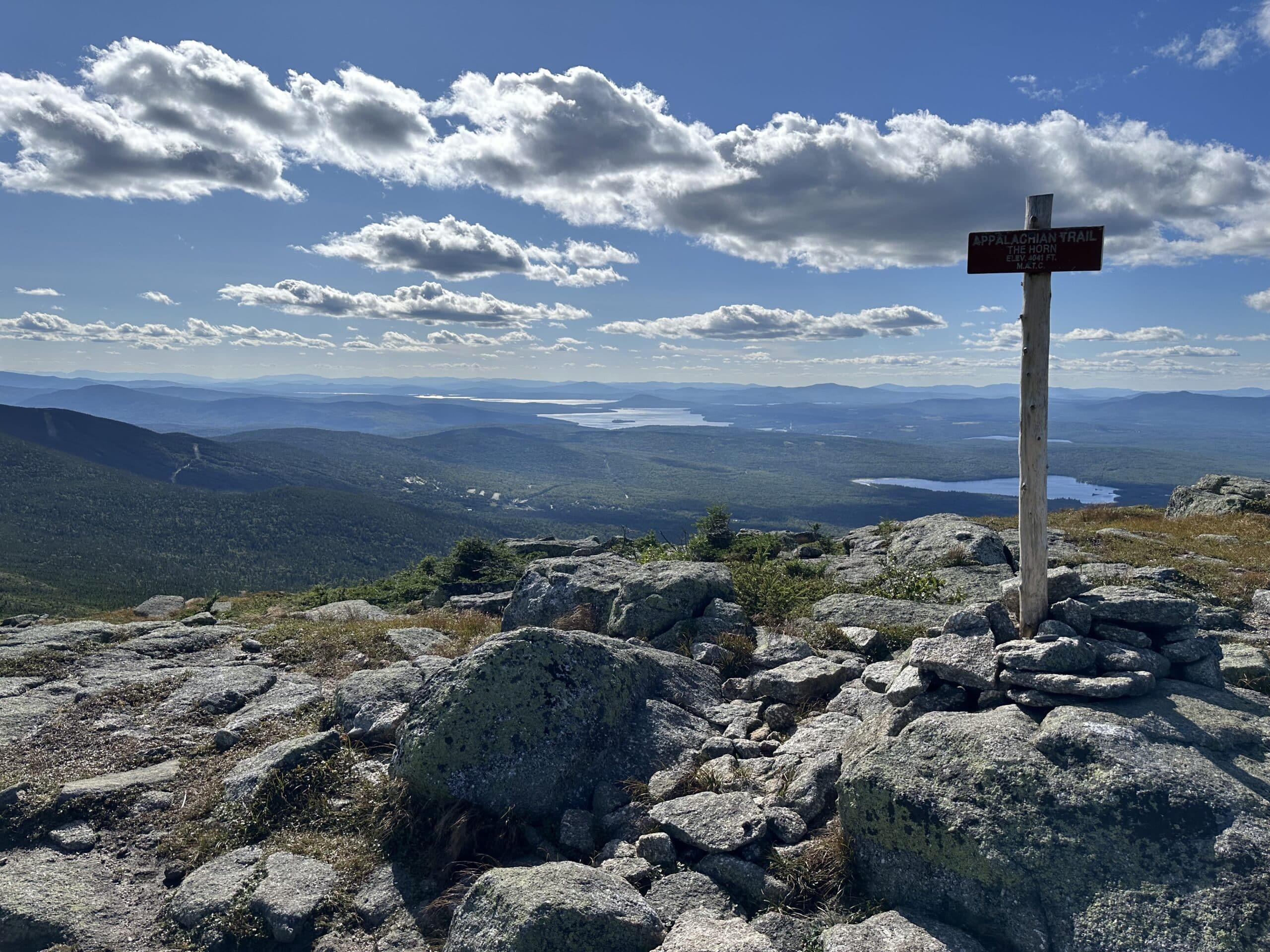
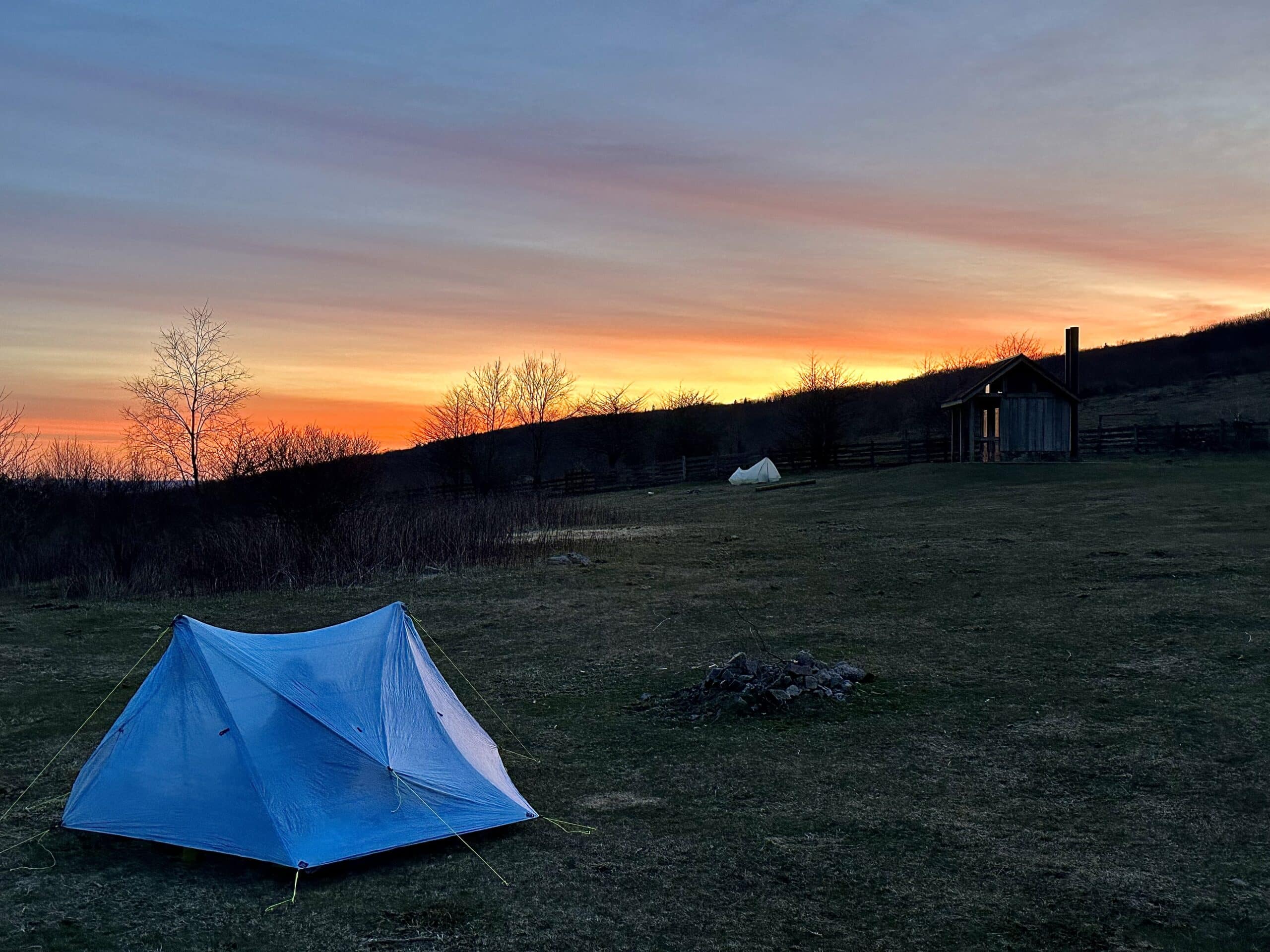

I like this format “what worked” and “what changed”. Simple yet effective.
I agree with your comment about Big Agnes zippers – can they not make zippers from grabbing each and every time? A small thing but a constant annoyance.
I’m completely sold on the Ultra fabric – it is rugged, light, and pretty much waterproof (aside from the seams). I have a Durston Kakwa 40 and will probably buy the 55L to augment this pack.
I use quilts when the temperature is above 25 but prefer my Feathered Friends Lark UL 10 degree mummy bag when it is truly and consistently cold (and I need a good night’s sleep).
I appreciate the feedback and feel like I wrote this email to myself – lol. I asked ULA about taping the seams and received the following response. “I don’t believe the seam seal will last long term and once water is able to get inside the pack, it will act like a bucket holding water.”. I also own the Lark and agree on consistently cold temperatures and using a sleeping bag. Thanks!